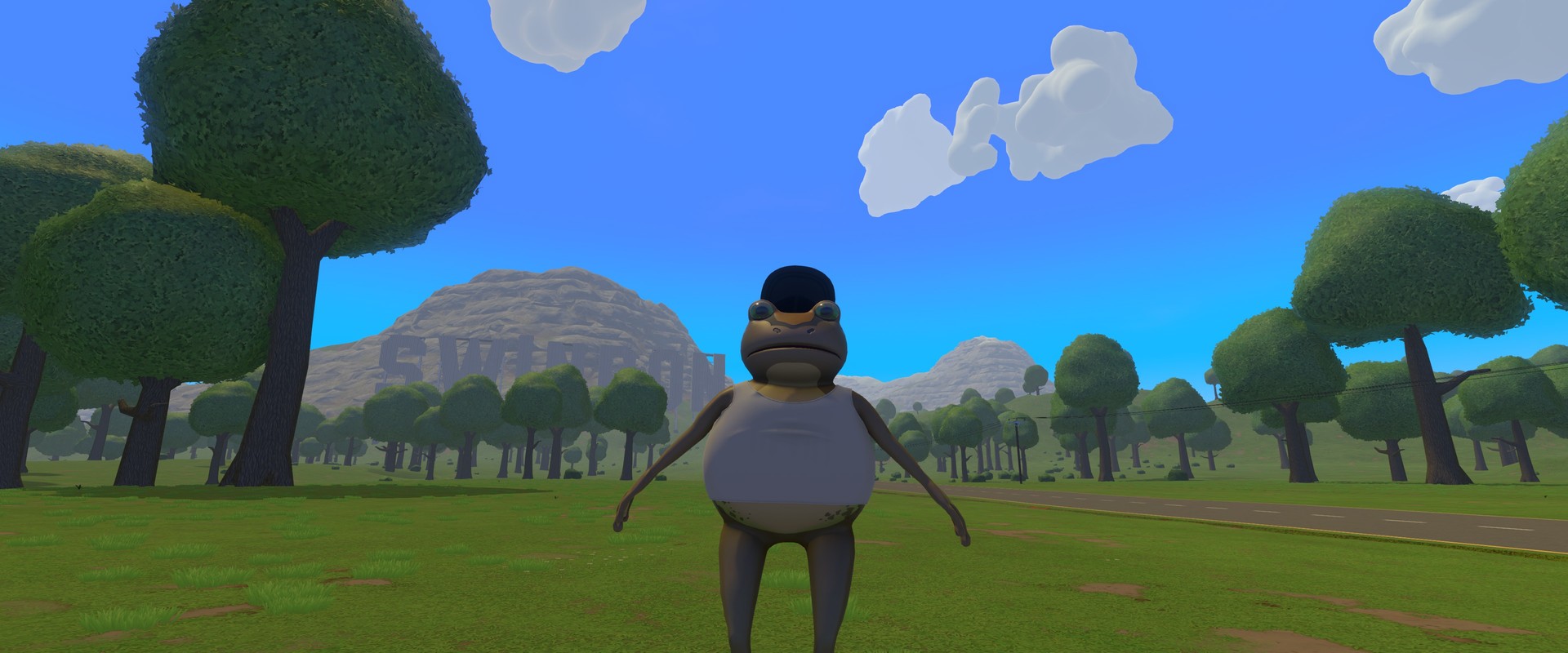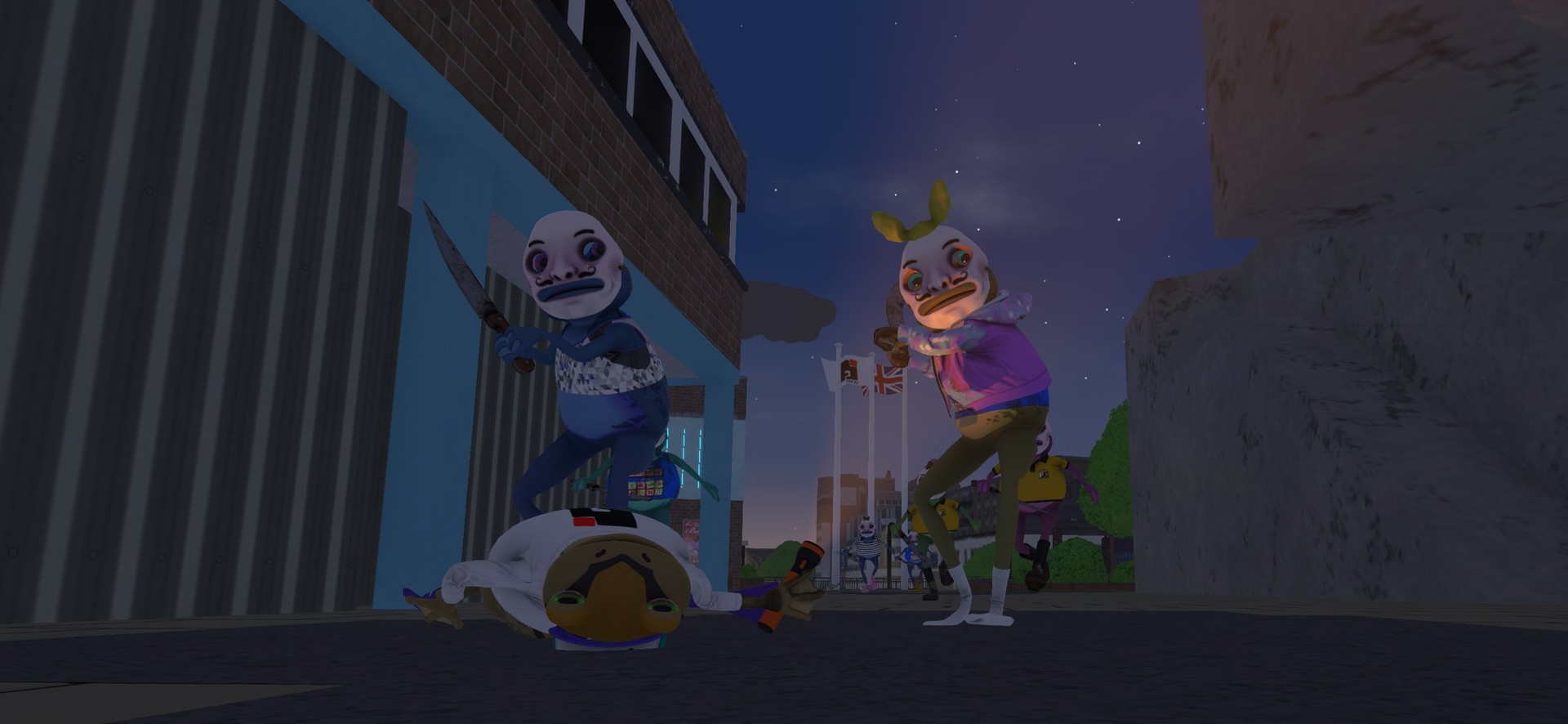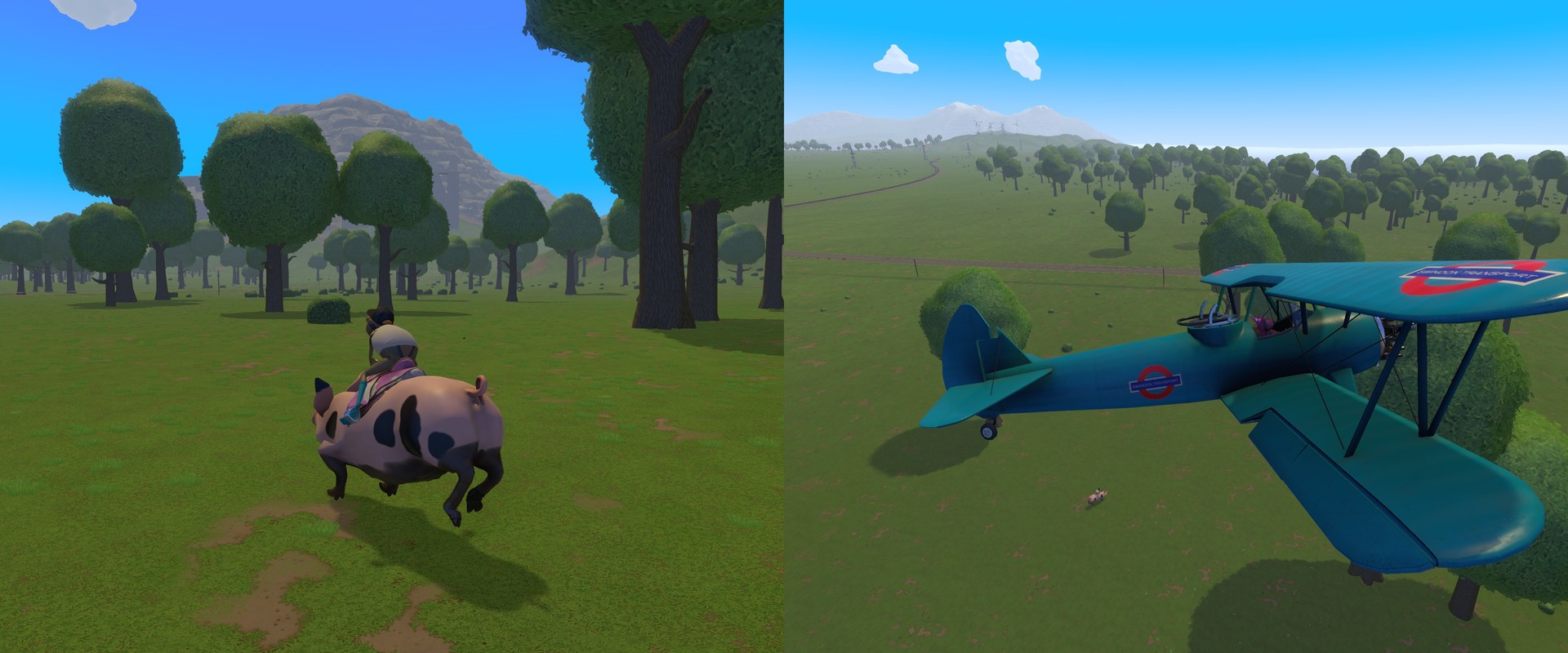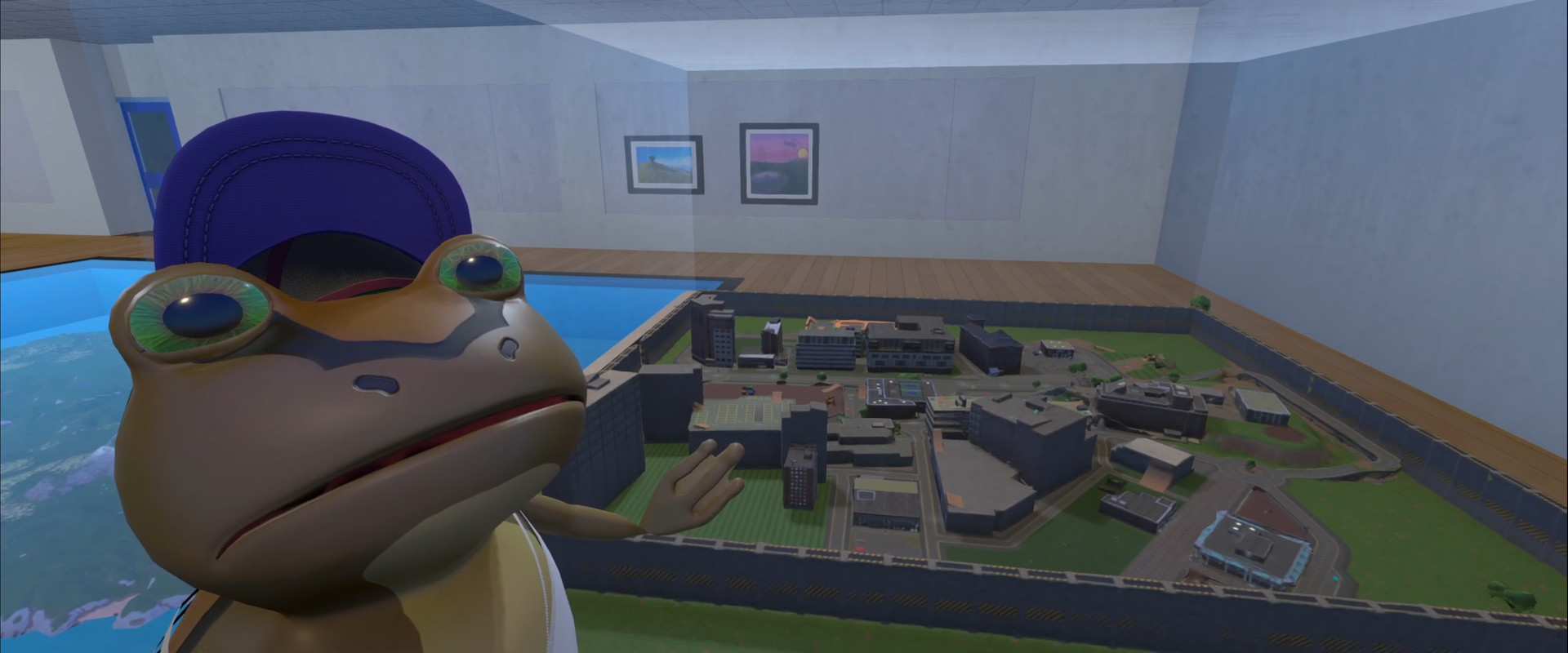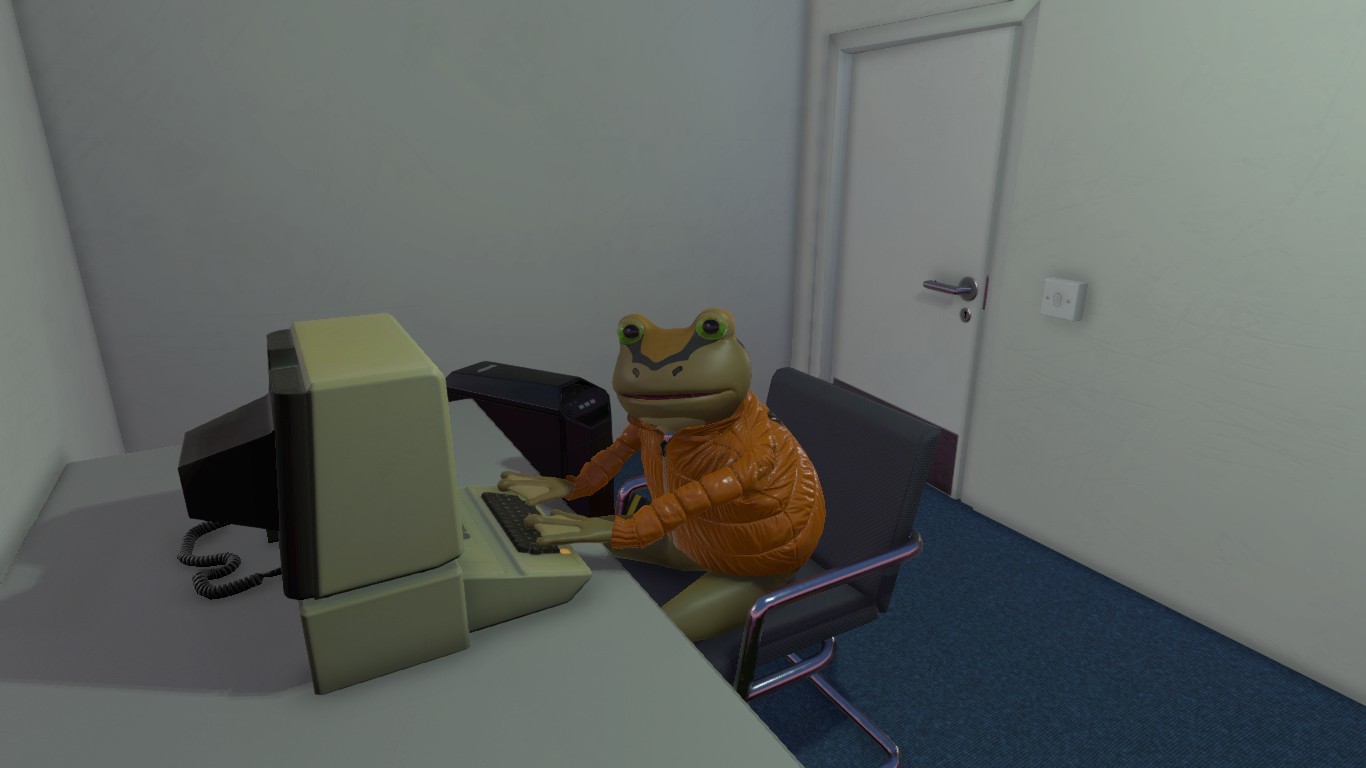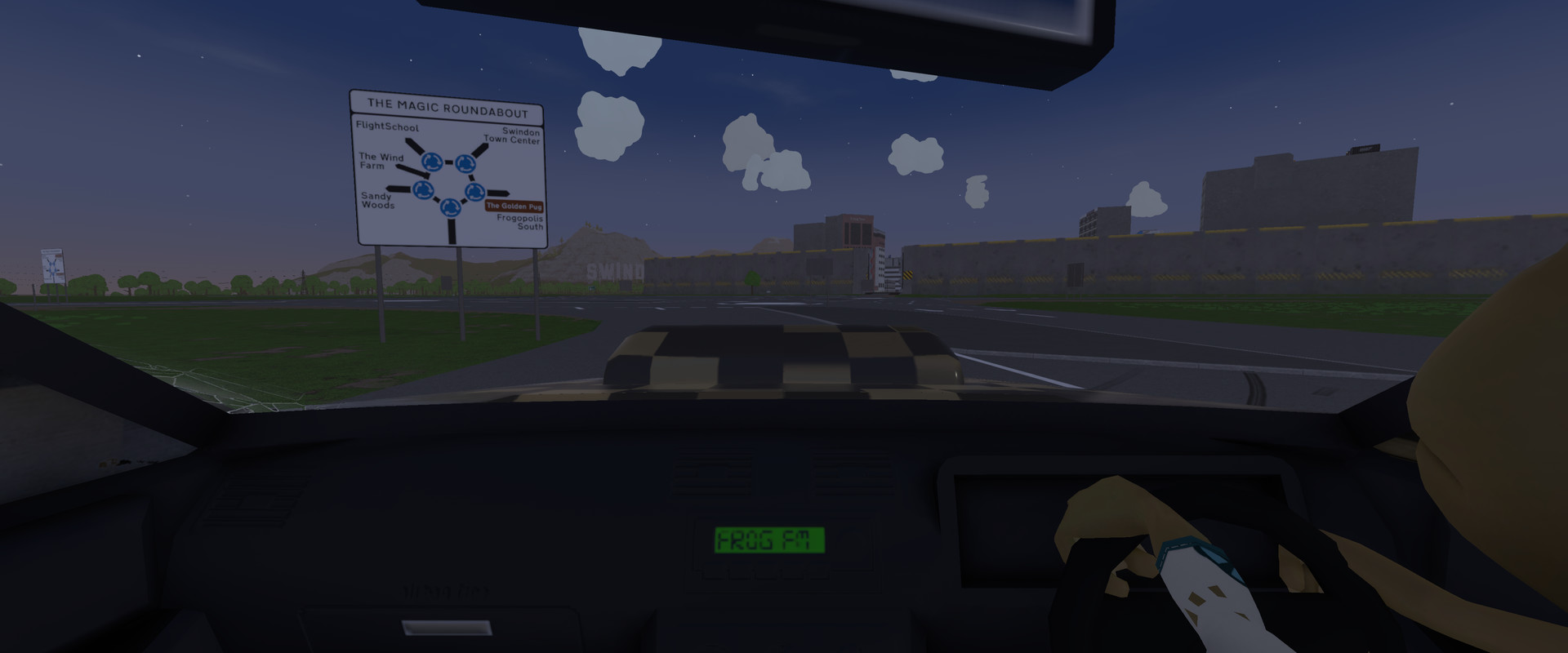Take a Tour of a Lovely UK Location
Hop around Swindon and take in the sights and sounds. This city has everything your frog could possibly dream of. Grab your morning joe at Frog Milk Coffee, stretch your legs at the fully fitted fart gym or take a drive by the seaside. The world is your frogster…er, oyster.Toadally Wild Mayhem
Ever wondered what frogs get up to in their spare time? There are loads of different items to interact with in the game including (but not limited to): balloons, tanks, eggs, weapons and sports balls (YAY SPORTS). And if none of that appeals to you, you can always shoot yourself out of cannon just to feel the wind on your froggy face.Be One With Nature
Frogs aren’t the only ones getting up to no good in Swindon. Hop into a boat and you might just come across a deadly shark. We recommend steering clear of them or, even better, steering INTO them*.If you’ve got more exotic tastes, the tourism board of Swindon recommends NOT going into the sewers. (We are not part of the tourism board and, therefore, heavily encourage it.)
*Note: No sharks were harmed in the making of Amazing Frog?
Welcome to Swindon Fellow Amphibians
What’s the fun of riding pigs with saddles or taking a dive at the gym pool without friends? Thankfully, Amazing Frog? invited all of his buds to Swindon and you can too. Amazing Frog? offers four player local multiplayer and four player remote play. It’s not easy being green, but it’s easy to play Amazing Frog? with friends.
While Amazing Frog? QMMT (Quest for the Magical Mystery Toilet) is about to leave Early Access after 10 years, Amazing Frog? 2 which we feel has so much more scope for the future is, lets face it just getting started.

Hey everyone, it's Hal again with an update on what I've been working on for the next release of
Amazing Frog? 2.
Lately, my focus has been on finalising a more streamlined and stable version of the Swindonshire
world. This involves implementing new technology and pipelines from QMMT to handle plant and
grass placement and rendering, along with resolving some lingering issueslike fixing sunlight
leaking into the rail tunnels.

As Ive mentioned before, many of these systems will now be powered by Houdini, allowing us to
place assets more intelligently and add new features faster. While building assets for AF2 takes
longer due to our goal of higher graphical fidelity, these new tools, alongside the engine
improvements Gaz is working on, should speed up content creation and variation in the long run.

This past week, Ive been refining the terrain under the town. Some areas needed to be lowered to
accommodate basement levels, while others had to align perfectly with roads and sidewalks.
Although the process seems straightforward, moving everything into Houdini for better control has
added some complexity. I sculpt the terrain in Unity, convert it into a mesh, and then use that
mesh like a stamp to transfer the details back into Houdinis heightfield. While more tedious, this
workflow ensures the world remains adaptable and saves time in the long run, especially when
making large-scale changes or adding new plant types.


Ive also been refining the trees and the tools Ive built to generate them. Ive developed a tool in
Houdini where I can design a tree and have it generate multiple variations (so that they dont all
look exactly the same). The system also generates all necessary LOD (Level of Detail) and
collision meshes for different viewing distances.
We now have four LOD stages for our trees:
The closest LOD uses a shader that distorts the surface by scaling the vertex positions. This
adds a "fluffy" appearance without relying on too much geometry, keeping rendering efficient.
The next two LODs are simplified versions of the trunk and foliage, using non-transparent
materials for better performance.
The farthest LOD is an "imposter"a flat quad that displays a baked image of the tree,
drastically reducing the cost of rendering forests, as distant trees are just billboards.

One of the perks of using Houdini for tree generation is the ability to add creative touches without
spending extra time. For example, I baked vertex colour noise into the foliage meshes and
projected it onto lower LODs. This allows the shaders to apply subtle colour variations to the
leaves, ensuring consistency across different LOD levels. Weve also implemented crossfading
between LODs, reducing the visual popping that often occurs when transitioning between levels
of detail.



Looking ahead to next week, Ill be tackling one of the more exciting tasks. Now that Gaz has
migrated the codebase from QMMT, we can better utilise physics zones and populate the world
with more frogs and content. Expect AF2 to feature more frogs than ever before, each with
distinct roles and purposes!

Minimum Setup
- Processor: i5 2 GHZ quad CoreMemory: 8 GB RAM
- Memory: 8 GB RAM
- Graphics: 4GB
- Storage: 21 GB available space
Recommended Setup
- Processor: i7 quad CoreMemory: 16 GB RAM
- Graphics: 8GB
- Storage: 21 GB available space
[ 6359 ]
[ 3675 ]
[ 2899 ]

